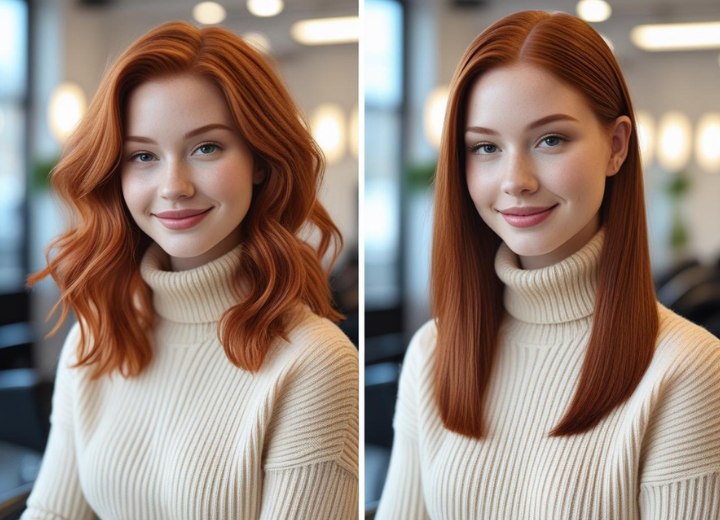Straightened Hair and Humid Weather

I'm wondering if permanent straightening might be the answer to my problem. What type of hair straightening treatment would you recommend, and does permanently straightened hair still get frizzy or start to curl when the weather gets humid?
A: You're dealing with a very common frustration that many people with naturally wavy or curly hair face. The temporary straightening you get from flat irons at the salon looks amazing, but as you've discovered, it simply can't stand up to your hair's natural texture memory, especially when humidity enters the picture.
Japanese thermal reconditioning is often considered the gold standard for achieving pin-straight, glossy hair that looks very similar to what you get from professional flat ironing. This process chemically breaks down the bonds in your hair that create its natural wave pattern, then rebuilds them in a straight formation using high heat. The results are truly permanent on the treated hair, meaning those sections will remain straight until they grow out or are cut off. This treatment works particularly well on hair that's naturally wavy rather than tightly curled, which sounds like it matches your hair type.
Brazilian keratin treatments, sometimes called Brazilian blowouts, work differently by coating your hair shaft with keratin proteins that smooth the cuticle and reduce frizz. While not technically "permanent" in the same way as chemical straightening, these treatments last about three to four months and gradually fade. They don't completely eliminate natural wave patterns but significantly reduce them while making hair less prone to humidity-induced frizz.
Chemical relaxers permanently break the disulfide bonds in your hair to eliminate curl and wave patterns. These are most commonly used on very curly hair textures, but they can also work on wavy hair. However, they tend to be harsher than other options and require very careful application.

Brazilian keratin treatments also offer good humidity protection, though not quite as complete as thermal reconditioning. Your hair will still be much smoother and more manageable in humid weather compared to untreated wavy hair, but you might see some very subtle wave return in extremely humid conditions.
While at-home straightening products have improved significantly over the years, they're generally not as effective or long-lasting as professional treatments, especially for achieving the level of straightness you're looking for. If you do decide to explore at-home options first, treat them with the same caution you'd use with any chemical hair treatment. Always perform a strand test, follow directions precisely, and consider having a friend help you with hard-to-reach areas.
Given your description of wanting that sleek, shiny look you get from salon flat ironing, Japanese thermal reconditioning would likely give you the closest results to what you're hoping for, especially if budget isn't your primary concern.
©Hairfinder.com
See also:
Hair straightening
How to maintain your hairstyle in humid weather
How to prevent that the humidity of sweat affects your straightened hair